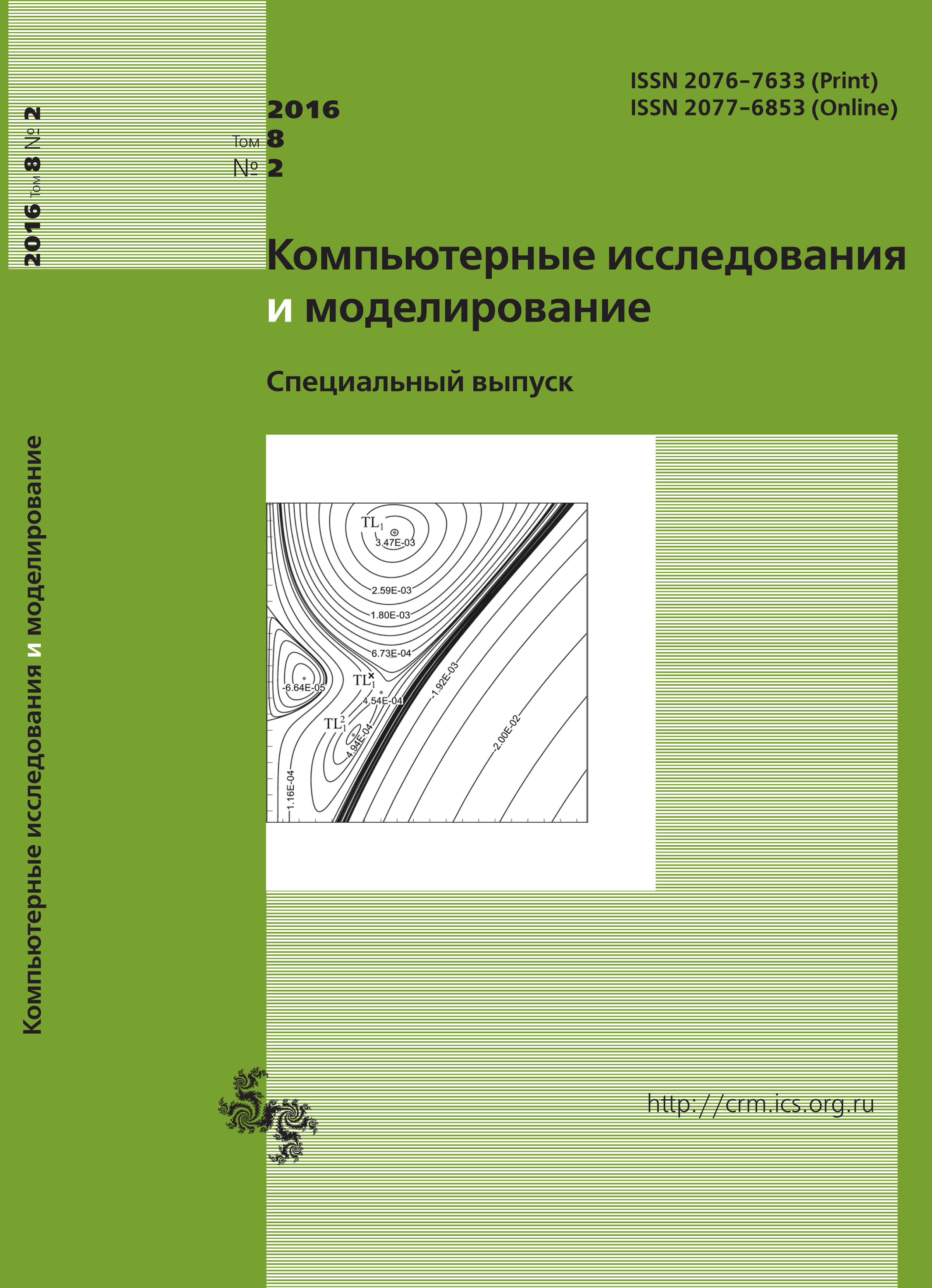Все выпуски
- 2024 Том 16
- 2023 Том 15
- 2022 Том 14
- 2021 Том 13
- 2020 Том 12
- 2019 Том 11
- 2018 Том 10
- 2017 Том 9
- 2016 Том 8
- 2015 Том 7
- 2014 Том 6
- 2013 Том 5
- 2012 Том 4
- 2011 Том 3
- 2010 Том 2
- 2009 Том 1
Дискретные модели популяционной динамики: достоинства, проблемы и обоснование
Список литературы:
- , , . Агентный подход в моделировании симбиотической азотфиксации: от пассивных объектов к активным субъектам взаимодействия // Агрофизика. — 2015. — № 4 (20). — С. 49–62.
- . Теория катастроф. — М: Наука, 1990. — 128 с.
- . Основы экологии. — М: Мир, 1975. — 415 с.
- . Расширенный фенотип: длинная рука гена. — М: АСТ: CORPUS, 2015. — 512 с.
- , . Неотрицательные матрицы как инструмент моделирования динамики популяций: классические модели и современные обобщения // Фундаментальная и прикладная математика. — 2007. — Т. 13, № 4. — С. 145–164.
- , . Биофизическая динамика продукционных процессов. — М.– Ижевск: Институт компьютерных исследований, 2004. — 464 с.
- , , . Дискретные модели в агроэкологии / В сб. Неделя науки СПбПУ: Материалы научного форума с международным участием. Инженерно-строительный институт. — 2015. — С. 191–193.
- , , , . Режимы динамики модели двухвозрастной популяции // Известия высших учебных заведений. Прикладная нелинейная динамика. — 2010. — Т. 18, № 2. — С. 111–130.
- . Загадка лемминговых циклов // Природа. — 1968. — № 12. — С. 45–50.
- . Сосуществование циклов непрерывного преобразования прямой в себя // Украинский математический журнал. — 1964. — Т. 26, № 1. — С. 61–71.
- , , , . Динамика одномерных отображений. — Киев: Наукова думка, 1989. — 216 с.
- . Matrix Population Models: Construction, Analysis, and Interpretation. — Sunderland, MA: Sinauer Associates, 2001. — 722 p.
- , , . The theory of individual based discrete-time processes // Journal of Statistical Physics. — 2014. — no. 156. — P. 131–155. — DOI: 10.1007/s10955-014-0990-2. — MathSciNet: MR3215119. — ads: 2014JSP...156..131C.
- , , . A Cellular Automata Model for a Community Comprising Two Plant Species of Different Growth Forms // Biology Bulletin. — 2015. — V. 42, no. 4. — P. 279–286. — DOI: 10.1134/S1062359015040044.
- , . Complex Discrete Dynamics from Simple Continuous Population Models // Bulletin of Mathematical Biology. — 2002. — no. 64 (3). — P. 611–620. — DOI: 10.1006/bulm.2002.0286.
- , . Individual-based chaos: Extensions of the discrete logistic model // Journal of Theoretical Biology. — 2013. — no. 339. — P. 84–92. — DOI: 10.1016/j.jtbi.2013.09.001. — MathSciNet: MR3124229.
- , . Ecological Orbits: how planets move and populations grow. — New York: Oxford University Press, 2004. — 161 p.
- . Pattern-oriented modeling of agent-based complex systems: lessons from ecology // Science. — 2005. — no. 310. — P. 987–991. — DOI: 10.1126/science.1116681. — ads: 2005Sci...310..987G.
- , , . Continuous versus discrete single species population models with adjustable reproductive strategies // Bulletin of Mathematical Biology. — 1997. — no. 59 (4). — P. 679–705. — DOI: 10.1007/BF02458425.
- . Dynamics of populations with nonoverlapping generations, continuous mortality, and discrete reproductive periods // Ecological Modelling. — 1994. — no. 74. — P. 305–309. — DOI: 10.1016/0304-3800(94)90125-2.
- , , , . Recurrence plots for the analysis of complex systems // Physics Reports. — 2007. — no. 438. — P. 237–329. — DOI: 10.1016/j.physrep.2006.11.001. — MathSciNet: MR2291699. — ads: 2007PhR...438..237M.
- . Biological Populations with Nonoverlapping Generations: Stable Points, Stable Cycles, and Chaos // Science, New Series. — 1974. — V. 186. — P. 645–647. — ads: 1974Sci...186..645M.
- , , . Integer-based modeling of population dynamics: Competition between attractors limits predictability // Ecol. Complexity. — 2013. — no. 14. — P. 108–116. — DOI: 10.1016/j.ecocom.2012.05.005.
- , . Agent-based and individual-based modeling: A practical introduction. — Princeton NJ: Princeton University Press, 2012. — MathSciNet: MR2153370.
- , . Design classes for hybrid simulations involving agent-based and system dynamics models // Simulation Modelling Practice and Theory. — 2012. — no. 25. — P. 118–133. — DOI: 10.1016/j.simpat.2011.09.002.
- . Resolving discrepancies between deterministic population models and individual-based simulations // American Naturalist. — 1998. — no. 151 (2). — P. 116–134.
Журнал индексируется в Scopus
Полнотекстовая версия журнала доступна также на сайте научной электронной библиотеки eLIBRARY.RU
Журнал входит в систему Российского индекса научного цитирования.
Журнал включен в базу данных Russian Science Citation Index (RSCI) на платформе Web of Science
Международная Междисциплинарная Конференция "Математика. Компьютер. Образование"
Copyright © 2009–2025 Институт компьютерных исследований







